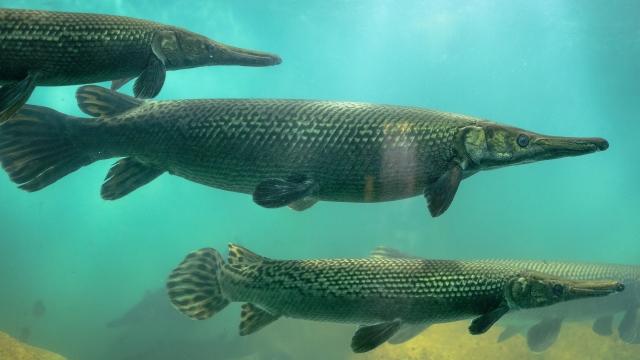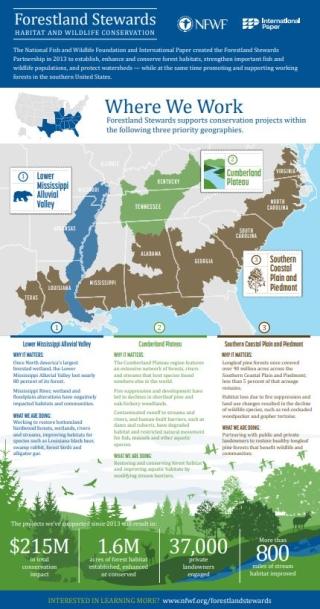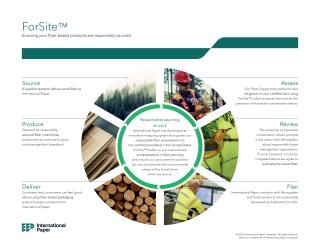Mississippi’s floodplains are quietly coming back to life. After decades of altered rivers and disconnected habitats, a powerful collaboration between the National Fish and Wildlife Foundation (NFWF), International Paper (IP), the Lower Mississippi River Conservation Committee (LMRCC), the Louisiana Department of Wildlife and Fisheries (LDWF) and other partners aims to reverse the damage. At the heart of this effort is an ancient fish: the alligator gar.
The alligator gar is among the largest freshwater fish in North America, capable of growing eight feet long and weighing up to 300 pounds. Native to the Mississippi River Valley and the Gulf Coast region, these fish trace their lineage back 150 million years, sharing waterways with dinosaurs. Despite their long history, in recent decades alligator gar have suffered significantly from habitat disruption, especially from levee construction, dams, and channelization. Today, it’s rare to find them thriving in their historic ranges.
Since 2019, NFWF and IP have funded grants to the LMRCC to reconnect Mississippi River floodplains, improving habitat conditions for alligator gar and countless other species. Floodplain connectivity not only benefits wildlife but also aids in flood mitigation and water quality improvement.
Alligator gar are not just fascinating creatures; they’re indicators of floodplain health. They migrate frequently between rivers and floodplains, so their presence and reproduction show whether our restoration efforts are effective.
At Richard K. Yancey Wildlife Management Area, a 70,000-acre site along the Mississippi River managed by LDWF and the U.S. Army Corps of Engineers, restoration work involved repairing three culverts and a weir – a structure used to manage water levels – improving fish passage and enabling land managers to better control water flow to the floodplain. Previously, this site experienced frequent low water levels and degraded water quality and the old culverts created "choke points" for fish moving between the river and floodplain. As water levels dropped, stranded fish, including gar, became easy prey for birds or died when the pools dried up. The new structures allow controlled, consistent flooding, creating ideal conditions for spawning while eliminating dangerous stranding. Monitoring conducted on this and similar restoration sites along the river shows positive results.
Learn more about IP’s 12-year partnership with NFWF
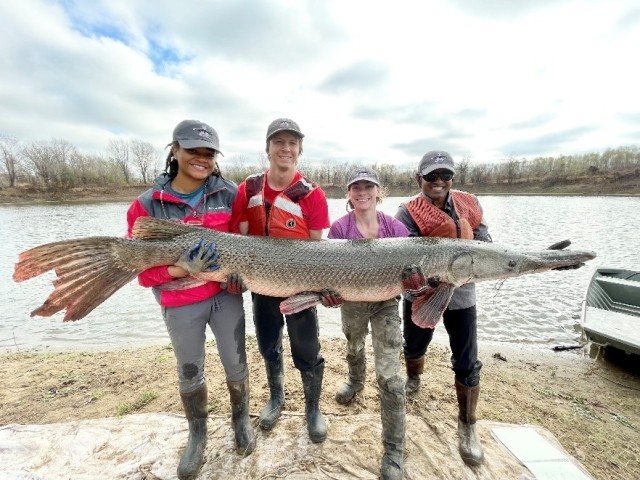
“We measure our success by checking if alligator gar reproduce in the restored floodplains,” explained David. “We confirm this through visual counts and stable isotope analysis of fin tissue, which tells us where these fish hatch and grow. Recent results at [another nearby restored property] show strong reproduction rates, indicating the restoration works.”
Stable isotope analysis identifies chemical signatures in the fish’s fins, indicating if a gar spent significant time on the floodplain or mainly stayed in the river. This method provides deeper insights than traditional fish counts, confirming whether the restored habitat truly benefits the species.
“Alligator gar are long-lived creatures, and can live for over 100 years. Protecting their habitats helps provide stability for the entire ecosystem,” David said.
Recently, scientists also discovered that gar have the slowest evolutionary rate of any jawed vertebrate, partly due to unique DNA repair mechanisms. Preserving their habitats may provide clues to broader ecological resilience.
Restoration of floodplain connectivity supports entire ecosystems, not just alligator gar. Game fish like bass and bluegill depend heavily on floodplains for reproduction and feeding. Water birds—ibises, wood storks, and pelicans—also flourish, particularly as waters recede and fish become more accessible. Predators such as gar maintain balance by regulating populations of smaller fish, helping sustain a healthier aquatic environment.
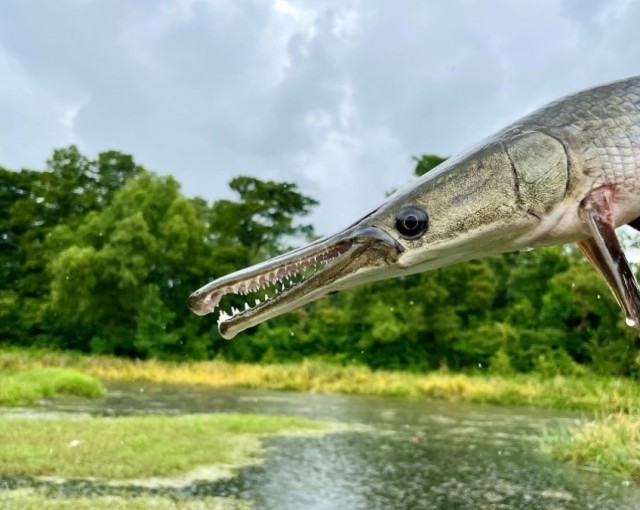
The benefits extend beyond wildlife. Floodplain reconnection reduces flood risks downstream by absorbing excess water naturally. Levees often exacerbate flooding by constricting rivers, making floods elsewhere more severe. Connected floodplains alleviate this pressure, offering safer, natural flood control.
The LMRCC continues to look for more places to do this kind of work, and monitoring efforts at past project sites are ongoing. Researchers remain optimistic, encouraged by the tangible return of thriving alligator gar populations and other wildlife indicators of success.
In restoring the Mississippi’s floodplains, the LMRCC doesn’t merely reconnect waterways; they reconnect people with the ecological heritage of one of America’s greatest rivers. As floodplains rebound and ancient fish return, these restored ecosystems promise a healthier future for wildlife and communities alike.
